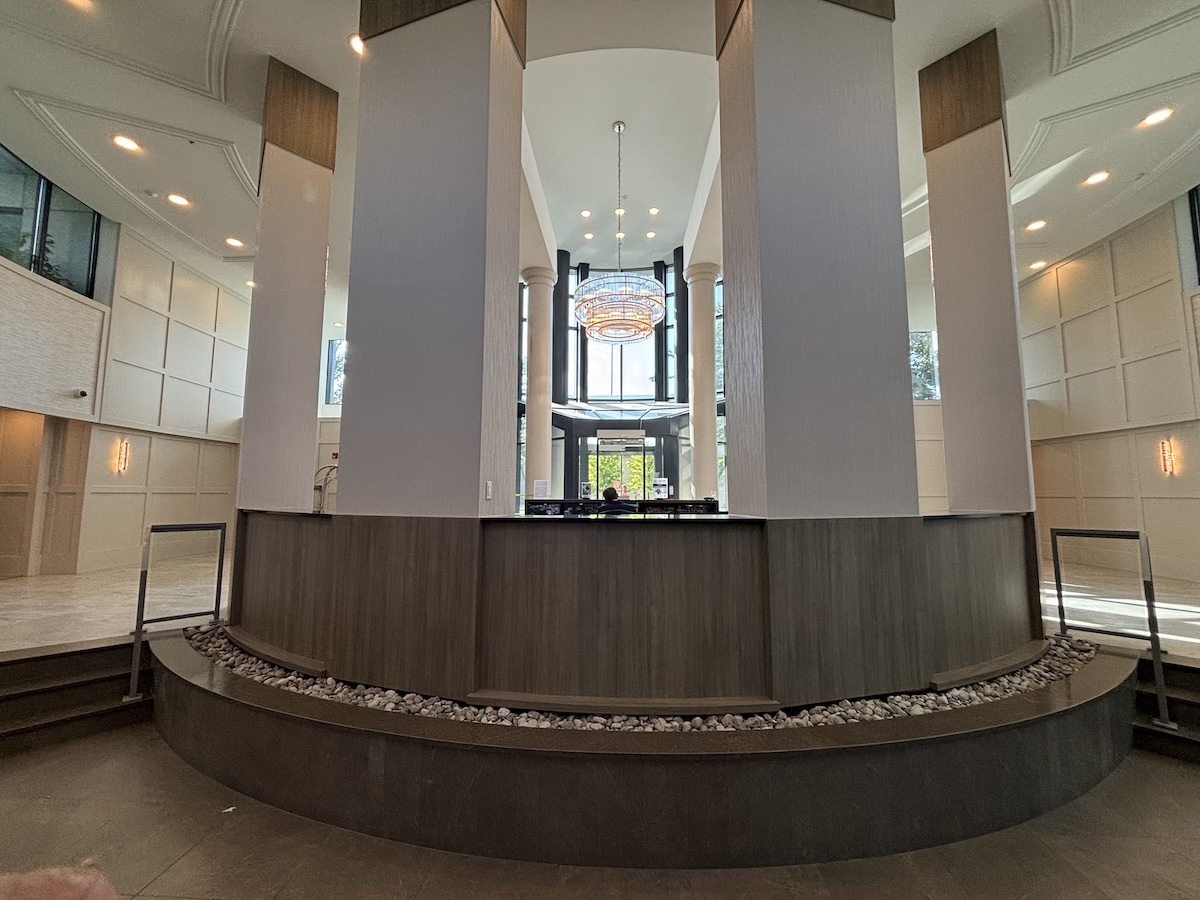Proper lighting in condominium corridors is essential for safety, security, and aesthetics. In Ontario, lighting in common areas must comply with Ontario Building Code (OBC), the Fire Code, and the Electrical Safety Code to ensure adequate illumination and energy efficiency. Here’s a guide to understanding lighting requirements and best practices for condominium corridors.
1. Minimum Illumination Levels
The Ontario Building Code (OBC) sets the minimum lighting requirements for public corridors in residential buildings. According to Section 9.34 of the OBC:
Minimum Illumination: Corridors must have a minimum lighting level of 50 lux (4.6 foot-candles) at floor level at all times.
Emergency Lighting: During a power failure, emergency lighting must provide at least 10 lux (0.9 foot-candles) at floor level for at least 30 minutes, ensuring residents can safely evacuate
What Does This Mean in Practical Terms?
- 50 lux is about the same brightness as a dimly lit office enough to comfortably navigate the hallway.
- 10 lux is roughly the brightness of a full moon on a clear night, just enough for emergency evacuation.
2. Emergency and Exit Lighting Requirements
Condominium corridors must include emergency lighting systems that comply with Ontario’s Fire Code (OFC) and the Canadian Electrical Code:
- Battery Backup or Generator Power: Emergency lighting must function even during power outages, typically through battery-powered units or a building generator.
- Exit Signs: Clearly visible, illuminated exit signs (green or red) are required to guide residents toward exits. These must remain lit 24/7 and operate during power failures.
- Testing Requirements: Property managers must conduct regular tests to ensure emergency lights remain functional.
3. Energy Efficiency and LED Upgrades
Ontario encourages energy-efficient lighting solutions to reduce electricity consumption in multi-residential buildings. Key considerations:
- LED Lighting: LEDs consume up to 75% less energy than traditional bulbs and last much longer, reducing maintenance costs.
- Motion Sensors and Timers: Installing occupancy sensors in less-used areas can help cut energy costs by dimming or turning off lights when no one is present.
- Dimmable Lighting: Some buildings use dimmable LED fixtures to reduce energy consumption during non-peak hours.
4. Light Fixture Placement for Safety and Aesthetics
Proper placement of light fixtures ensures even illumination and eliminates dark spots that could pose security risks. Best practices include:
- Spacing Fixtures Evenly: Avoid placing lights too far apart, which can create shadowed areas that reduce visibility.
- Wall Sconces vs. Ceiling Fixtures: Ceiling-mounted fixtures provide general illumination, while wall sconces add aesthetic appeal and reduce glare.
- Color Temperature (Kelvin Scale):
- 2700K – 3000K (Warm White): Creates a cozy, residential feel.
- 3500K – 4000K (Neutral White): Ideal for clear visibility and modern aesthetics.
- 5000K+ (Cool White/Daylight): Too harsh for corridors, can cause glare.
5. Accessibility Considerations
The Accessibility for Ontarians with Disabilities Act (AODA) requires that common areas, including corridors, be well-lit to assist individuals with visual impairments.
- Glare Reduction: Use diffused lighting to prevent harsh reflections that may disorient some residents.
- Contrast: Adequate contrast between walls, doors, and flooring helps residents with low vision navigate safely.
- Consistent Lighting Levels: Avoid sudden changes in brightness, which can be disorienting for residents with mobility or visual impairments.
6. Smart Lighting and Automation Trends
Many new condominium developments are incorporating smart lighting technology for increased efficiency and convenience:
- Automated Dimming: Lights automatically adjust based on natural light levels.
- Remote Monitoring: Property managers can monitor and adjust lighting through centralized building management systems.
- Color-Tunable LEDs: Some buildings use adaptive lighting that shifts color temperature throughout the day to mimic natural daylight patterns.
Final Thoughts
Proper lighting in condominium corridors is essential for safety, compliance, and energy efficiency. By following Ontario’s building and fire codes while integrating modern lighting technology, property managers can enhance resident comfort, reduce costs, and maintain a visually appealing environment.

